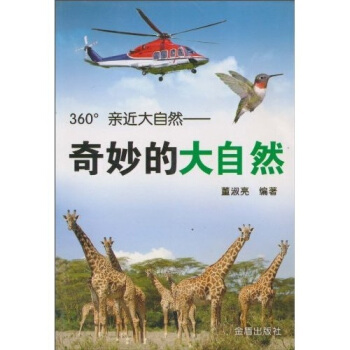![概率論入門 [A Probability Path]](https://pic.qciss.net/11314934/rBEhWVIxiAAIAAAAAACYpWnL9lEAADFiQAt_-QAAJi9392.jpg)

齣版社: 世界圖書齣版公司
ISBN:9787510058271
版次:1
商品編碼:11314934
包裝:平裝
外文名稱:A Probability Path
開本:16開
齣版時間:2013-05-01
用紙:膠版紙
頁數:453
正文語種:英文
具體描述
內容簡介
《概率論入門》是一部十分經典的概率論教程。1999年初版,2001年第2次重印,2003年第3次重印,同年第4次重印,2005年第5次重印,受歡迎程度可見一斑。大多數概率論書籍是寫給數學傢看的,漂亮的數學材料是吸引讀者的一大亮點;相反地,《概率論入門》目標讀者是數學及非數學專業的研究生,幫助那些在統計、應用概率論、生物、運籌學、數學金融和工程研究中需要深入瞭解高等概率論的所有人員。目錄
preface1 sets and events
1.1 introduction
1.2 basic set theory
1.2.1 indicator functions
1.3 limits of sets
1.4 monotone sequences
1.5 set operations and closure
1.5.1 examples
1.6 the a-field generated by a given class c
1.7 bore1 sets on the real line
1.8 comparing borel sets
1.9 exercises
2 probability spaces
2.1 basic definitions and properties
2.2 more on closure
2.2.1 dynkin's theorem
2.2.2 proof of dynkin's theorem
2.3 two constructions
2.4 constructions of probability spaces
2.4.1 general construction of a probability model
2.4.2 proof of the second extension theorem
2.5 measure constructions
2.5.1 lebesgue measure on (0, 1)
2.5.2 construction of a probability measure on r with given distribution function f (x)
2.6 exercises
3 random variables, elements, and measurable maps
3.1 inverse maps
3.2 measurable maps, random elements,induced probability measures
3.2.1 composition
3.2.2 random elements of metric spaces
3.2.3 measurability and continuity
3.2.4 measurability and limits
3.3 σ-fields generated by maps
3.4 exercises
4 independence
4.1 basic definitions
4.2 independent random variables
4.3 two examples of independence
4.3.1 records, ranks, renyi theorem
4.3.2 dyadic expansions of uniform random numbers
4.4 more on independence: groupings
4.5 independence, zero-one laws, borel-cantelli lemma
4.5.1 borel-cantelli lemma
4.5.2 borel zero-one law
4.5.3 kolmogorov zero-one law
4.6 exercises
5 integration and expectation
5.1 preparation for integration
5.1.1 simple functions
5.1.2 measurability and simple functions
5.2 expectation and integration
5.2.1 expectation of simple functions
5.2.2 extension of the definition
5.2.3 basic properties of expectation
5.3 limits and integrals
5.4 indefinite integrals
5.5 the transformation theorem and densities
5.5.1 expectation is always an integral on r
5.5.2 densities
5.6 the riemann vs lebesgue integral
5.7 product spaces
5.8 probability measures on product spaces
5.9 fubini's theorem
5.10 exercises
6 convergence concepts
6.1 almost sure convergence
6.2 convergence in probability
6.2.1 statistical terminology
6.3 connections between a.s. and j.p. convergence
6.4 quantile estimation
6.5 lp convergence
6.5.1 uniform integrability
6.5.2 interlude: a review of inequalities
6.6 more on lp convergence
6.7 exercises
7 laws of large numbers and sums of independent random variables
7.1 truncation and equivalence
7.2 a general weak law of large numbers
7.3 almost sure convergence of sums of independent random variables
7.4 strong laws of large numbers
7.4.1 two examples
7.5 the strong law of large numbers for lid sequences
7.5.1 two applications of the slln
7.6 the kolmogorov three series theorem
7.6.1 necessity of the kolmogorov three series theorem
7.7 exercises
8 convergence in distribution
8.1 basic definitions
8.2 scheff6's lemma
8.2.1 scheff6's lemma and order statistics
8.3 the baby skorohod theorem
8.3.1 the delta method
8.4 weak convergence equivalences; portmanteau theorem
8.5 more relations among modes of convergence
8.6 new convergences from old
8.6.1 example: the central limit theorem for m-dependent random variables
8.7 the convergence to types theorem
8.7.1 application of convergence to types: limit distributions for extremes
8.8 exercises
9 characteristic functions and the central limit theorem
9.1 review of moment generating functions and the central limit theorem
9.2 characteristic functions: definition and first properties.
9.3 expansions
9.3.1 expansion of eix
9.4 moments and derivatives
9.5 two big theorems: uniqueness and continuity
9.6 the selection theorem, tightness, and prohorov's theorem
9.6.1 the selection theorem
9.6.2 tightness, relative compactness, and prohorov's theorem
9.6.3 proof of the continuity theorem
9.7 the classical clt for iid random variables
9.8 the lindeberg-feller clt
9.9 exercises
10 martingales
10.1 prelude to conditional expectation:the radon-nikodym theorem
10.2 definition of conditional expectation
10.3 properties of conditional expectation
10.4 martingales
10.5 examples of martingales
10.6 connections between martingales and submartingales
10.6.1 doob's decomposition
10.7 stopping times
10.8 positive super martingales
10.8.1 operations on supermartingales
10.8.2 upcrossings
10.8.3 boundedness properties
10.8.4 convergence of positive super martingales
10.8.5 closure
10.8.6 stopping supermartingales
10.9 examples
10.9.1 gambler's ruin
10.9.2 branching processes
10.9.3 some differentiation theory
10.10 martingale and submartingale convergence
10.10.1 krickeberg decomposition
10.10.2 doob's (sub)martingale convergence theorem
10.11 regularity and closure
10.12 regularity and stopping
10.13 stopping theorems
10.14 wald's identity and random walks
10.14.1 the basic martingales
10.14.2 regular stopping times
10.14.3 examples of integrable stopping times
10.14.4 the simple random walk
10.15 reversed martingales
10.16 fundamental theorems of mathematical finance
10.16.1 a simple market model
10.16.2 admissible strategies and arbitrage
10.16.3 arbitrage and martingales
10.16.4 complete markets
10.16.5 option pricing
10.17 exercises
references
index
前言/序言
用戶評價
評分
還可以
評分。。。。。。。。。。
評分很好的基於測度論的概率論教材
評分一部十分經典的概率論教程。
評分發貨速度快,書還沒看
評分評分
這套書內容都比較深,難度有點大,先買來放著。
評分集閤和測度論基礎,Lebesgue積分,屬於概率論的一部中階教材。
評分經典教材,留著慢慢看。以為是初等概率論,實際是高等概率論,要有測度的基礎。
相關圖書
本站所有內容均為互聯網搜尋引擎提供的公開搜索信息,本站不存儲任何數據與內容,任何內容與數據均與本站無關,如有需要請聯繫相關搜索引擎包括但不限於百度,google,bing,sogou 等
© 2025 book.qciss.net All Rights Reserved. 圖書大百科 版權所有


![典藏:房龍地理(原版插圖) [Van Loon's Geography: The Story of the World We Live In] pdf epub mobi 电子书 下载](https://pic.qciss.net/11612642/54afb145Nf63e8ffd.jpg)
















![不確定性 [Uncertainty] pdf epub mobi 电子书 下载](https://pic.qciss.net/10377470/7b47407b-12a1-4b1a-ab90-d1d801e94eed.jpg)
